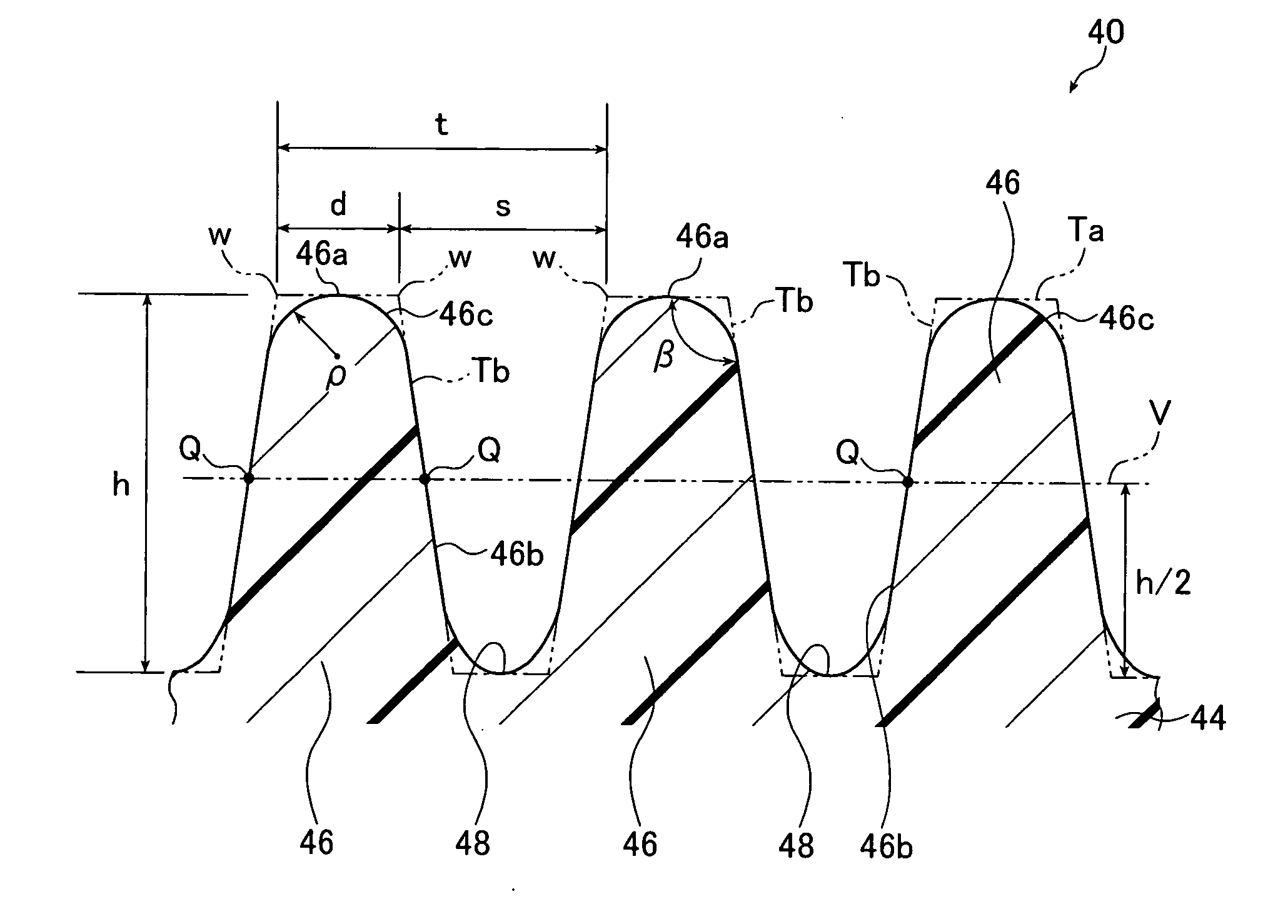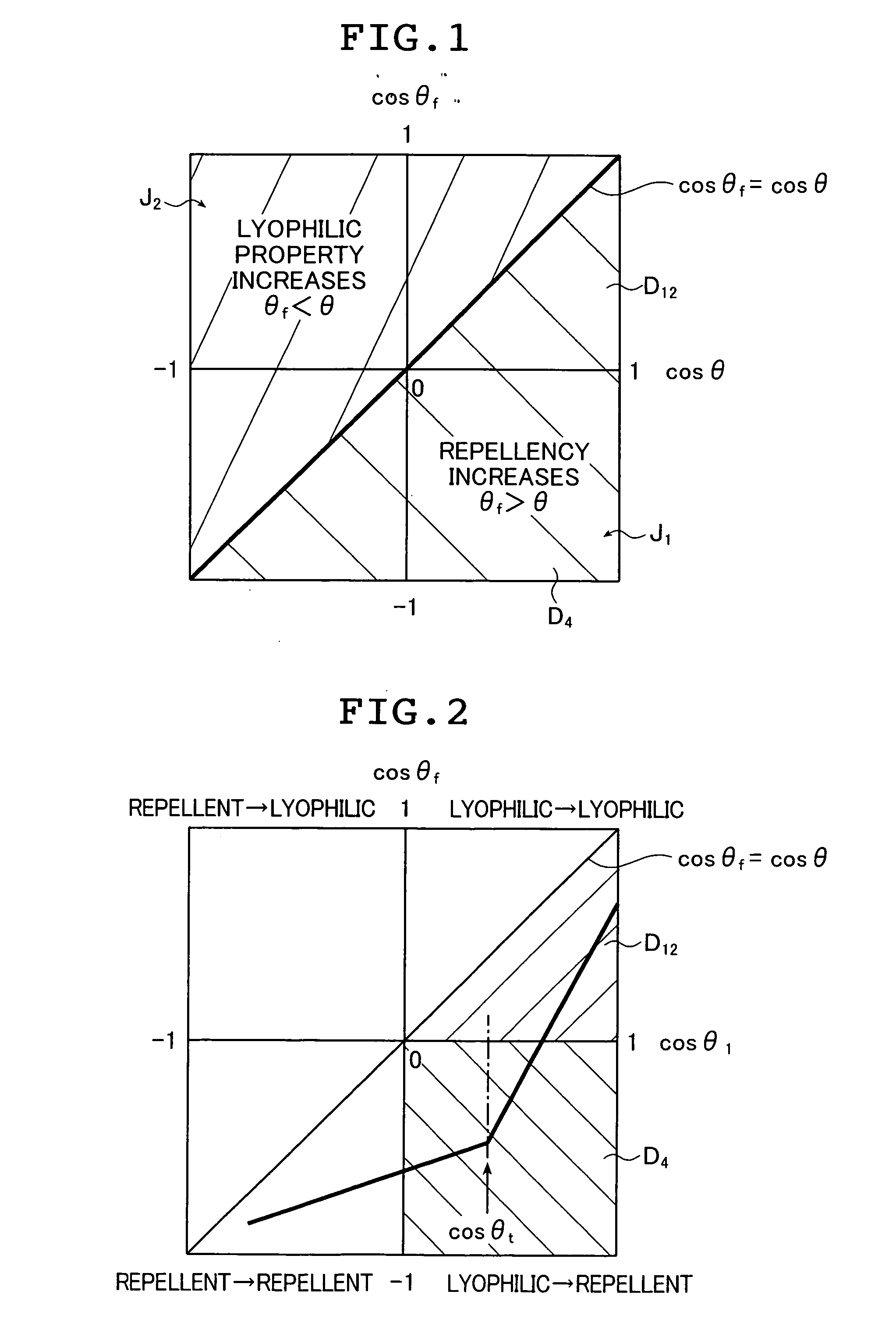Protective film
a protective film and film technology, applied in the field of protective films, can solve the problems of insufficient anti-smudging properties, complex production process, and inability to prevent the visibility from being deteriorated, and achieve the effects of enhancing the visibility of displayed images, reducing the burden on the eyes of operators, and excellent visibility
- Summary
- Abstract
- Description
- Claims
- Application Information
AI Technical Summary
Benefits of technology
Problems solved by technology
Method used
Image
Examples
first embodiment
[0136] [First embodiment]
[0137]FIG. 10A is a schematic sectional view showing a protective film according to a first embodiment of the present invention, and Fig. 10B is a schematic plan view of the protective film shown in FIG. 10A.
[0138] As shown in FIG. 10A, a protective film 40 in this embodiment includes a supporting substrate 42 and a protective layer 44 formed on a surface of the supporting substrate 42.
[0139] The supporting substrate 42 supports the protective layer 44 and its surface is flat. The supporting substrate 42 is formed from, for example, a plastic film that is transparent in a visible light wavelength range of 380 nm to 630 nm.
[0140] The plastic film that may be used for the supporting substrate 42 is preferably formed of, for example, cellulose ethers such as triacetyl cellulose, diacetyl cellulose and propionyl cellulose or polyolefins such as polypropylene, polyethylene and polymethylpentene.
[0141] The protective layer 44 is a nonreflective, anti-smudging ...
second embodiment
[0166] [Second embodiment]
[0167] Next, a protective film according to a second embodiment of the present invention will be described. In this embodiment, the same components as those in the first embodiment shown in FIGS. 10A, 10B and 11 are denoted by the same reference numerals and their detailed description will be omitted.
[0168]FIG. 12A is a schematic sectional view showing the protective film according to the second embodiment of the present invention, and FIG. 12B is a schematic plan view of the protective film shown in FIG. 12A. FIG. 13 is a sectional view taken along the line II-II in FIG. 12B.
[0169] As shown in FIG. 12A, the protective film 50 in this embodiment is different from the protective film 40 in the first embodiment (see FIG. 10A) in the structure of the protective layer 52 but the former is the same as the latter in the structures of the other portions, so their detailed description will be omitted.
[0170] As shown in FIGS. 12A and 12B, the protective layer 52 ...
third embodiment
[0186] [Third embodiment]
[0187] Next, a protective film 60 according to a third embodiment of the present invention will be described. In this embodiment, the same components as those in the first embodiment shown in FIGS. 10A, 10B and 11 are denoted by the same reference numerals and their detailed description will be omitted.
[0188]FIG. 14 is a schematic sectional view showing the protective film according to the third embodiment of the present invention.
[0189] As shown in FIG. 14, the protective film 60 of this embodiment is the same as the protective film 40 of the first embodiment (see FIG. 10A) except that the protective layer 44 is not formed but projections 64 and recesses 66 are formed on a supporting substrate 62 that is transparent in the visible light region, and that an anti-smudging layer 68 is formed on the projections 64 and the recesses 66 of the supporting substrate 62, so its detailed description will be omitted.
[0190] For example, cellulose ethers such as triac...
PUM
| Property | Measurement | Unit |
|---|---|---|
| refractive index | aaaaa | aaaaa |
| refractive index | aaaaa | aaaaa |
| contact angle | aaaaa | aaaaa |
Abstract
Description
Claims
Application Information
 Login to View More
Login to View More - R&D
- Intellectual Property
- Life Sciences
- Materials
- Tech Scout
- Unparalleled Data Quality
- Higher Quality Content
- 60% Fewer Hallucinations
Browse by: Latest US Patents, China's latest patents, Technical Efficacy Thesaurus, Application Domain, Technology Topic, Popular Technical Reports.
© 2025 PatSnap. All rights reserved.Legal|Privacy policy|Modern Slavery Act Transparency Statement|Sitemap|About US| Contact US: help@patsnap.com



